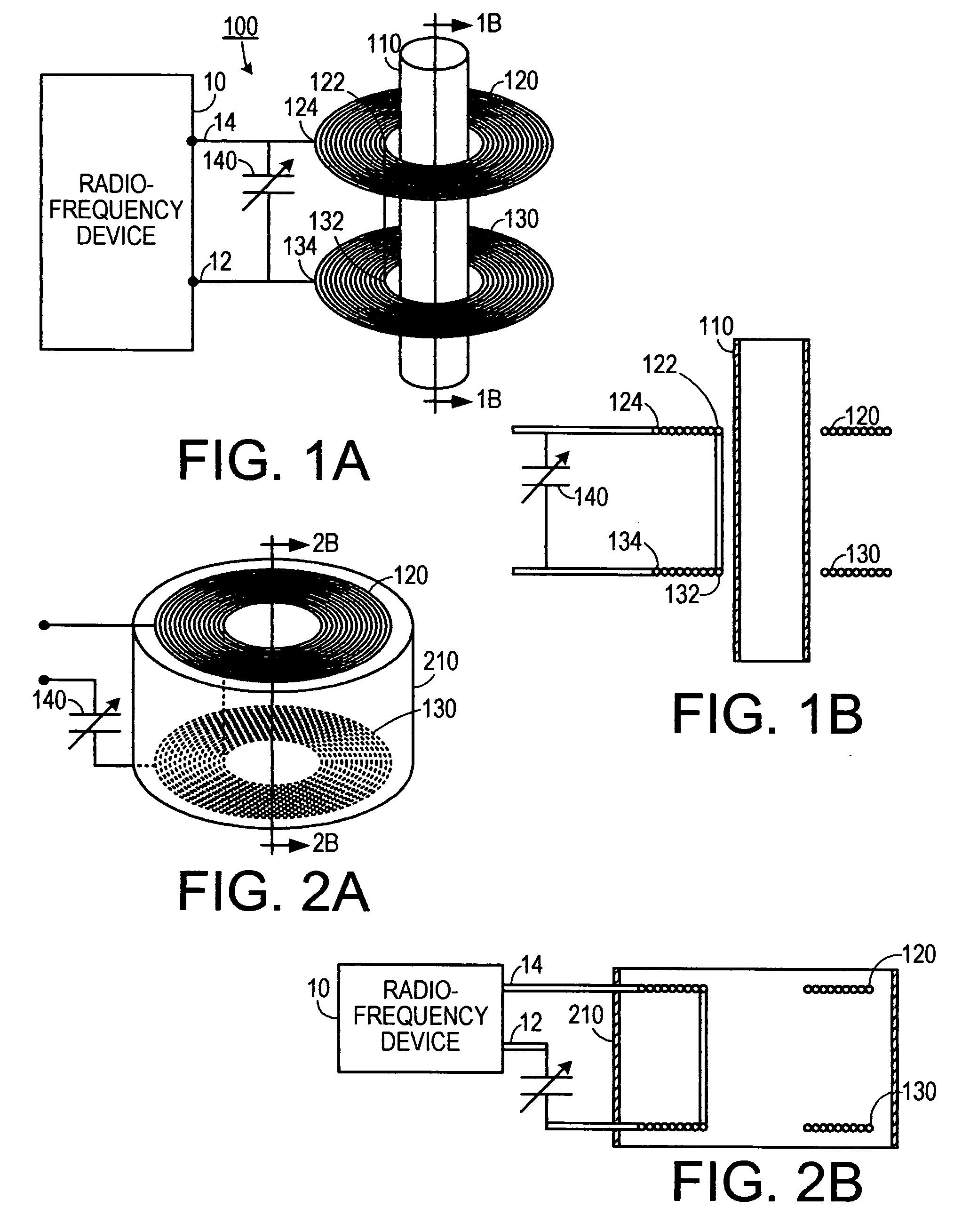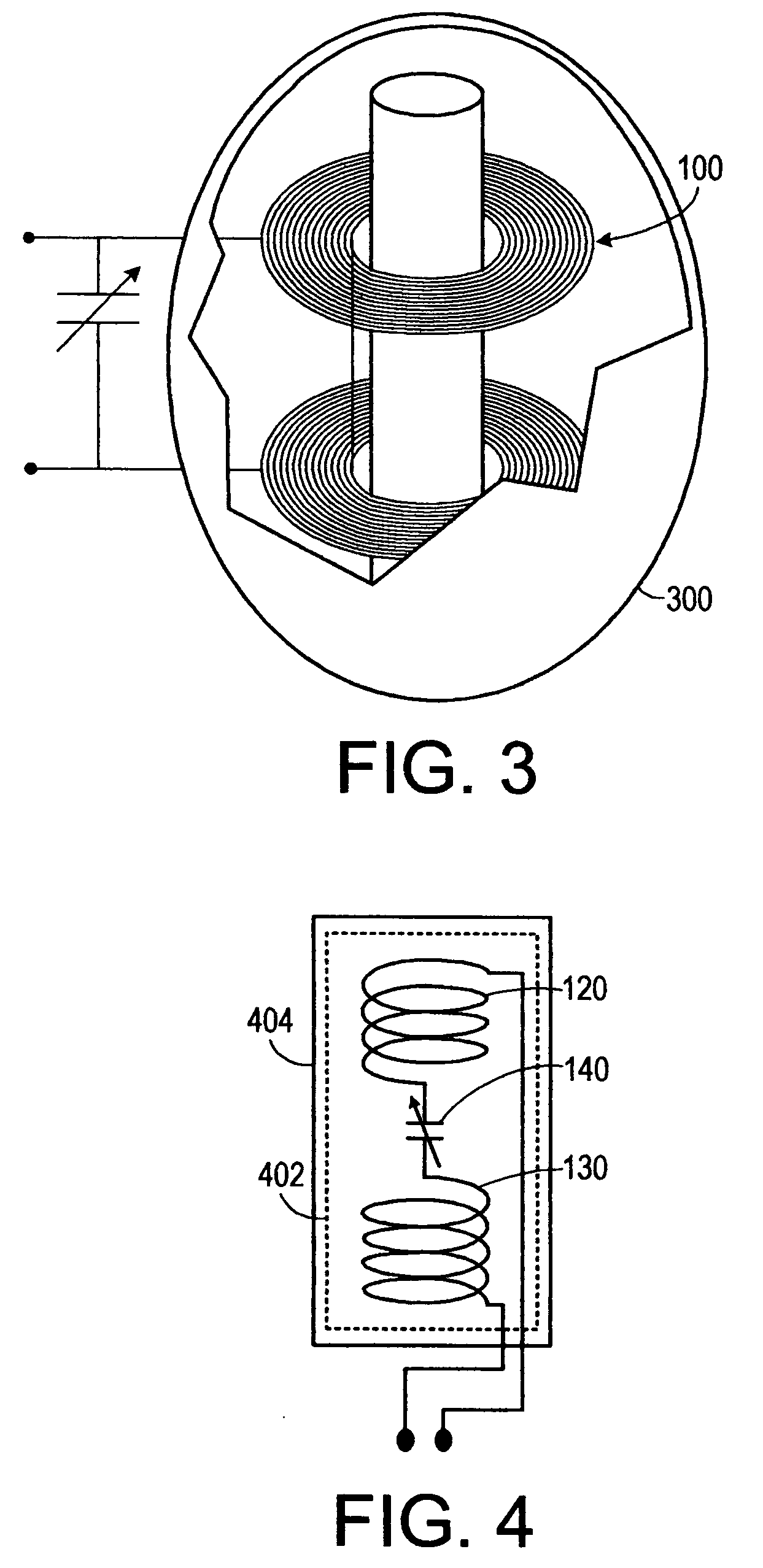Antenna for electron spin radiation
a technology of electron spin radiation and antenna, which is applied in the direction of loop antenna, loop antenna with ferromagnetic core, radiating element structure, etc., can solve the problems of not being able to receive or transmit kor radiation, and requiring a typical wire antenna substantial spa
- Summary
- Abstract
- Description
- Claims
- Application Information
AI Technical Summary
Benefits of technology
Problems solved by technology
Method used
Image
Examples
Embodiment Construction
[0020] A preferred embodiment of the invention is now described in detail. Referring to the drawings, like numbers indicate like parts throughout the views. As used in the description herein and throughout the claims, the following terms take the meanings explicitly associated herein, unless the context clearly dictates otherwise: the meaning of “a,”“an,” and “the” includes plural reference, the meaning of “in” includes “in” and “on.”
[0021] As shown in FIGS. 1A and 1B, one illustrative embodiment of the invention is an antenna 100 for generating radiation corresponding to a signal from a radio frequency communications device 10, such as a transmitter or a receiver, having a first signal terminal 12 and a second signal terminal 14. The antenna 10 includes a substantially cylindrical conductor 110, a first spiral-wound flat inductor 120 and a second spiral-wound flat inductor 130, both of which are substantially coaxial with the cylindrical conductor. The first spiral-wound flat induc...
PUM
 Login to View More
Login to View More Abstract
Description
Claims
Application Information
 Login to View More
Login to View More - R&D
- Intellectual Property
- Life Sciences
- Materials
- Tech Scout
- Unparalleled Data Quality
- Higher Quality Content
- 60% Fewer Hallucinations
Browse by: Latest US Patents, China's latest patents, Technical Efficacy Thesaurus, Application Domain, Technology Topic, Popular Technical Reports.
© 2025 PatSnap. All rights reserved.Legal|Privacy policy|Modern Slavery Act Transparency Statement|Sitemap|About US| Contact US: help@patsnap.com



